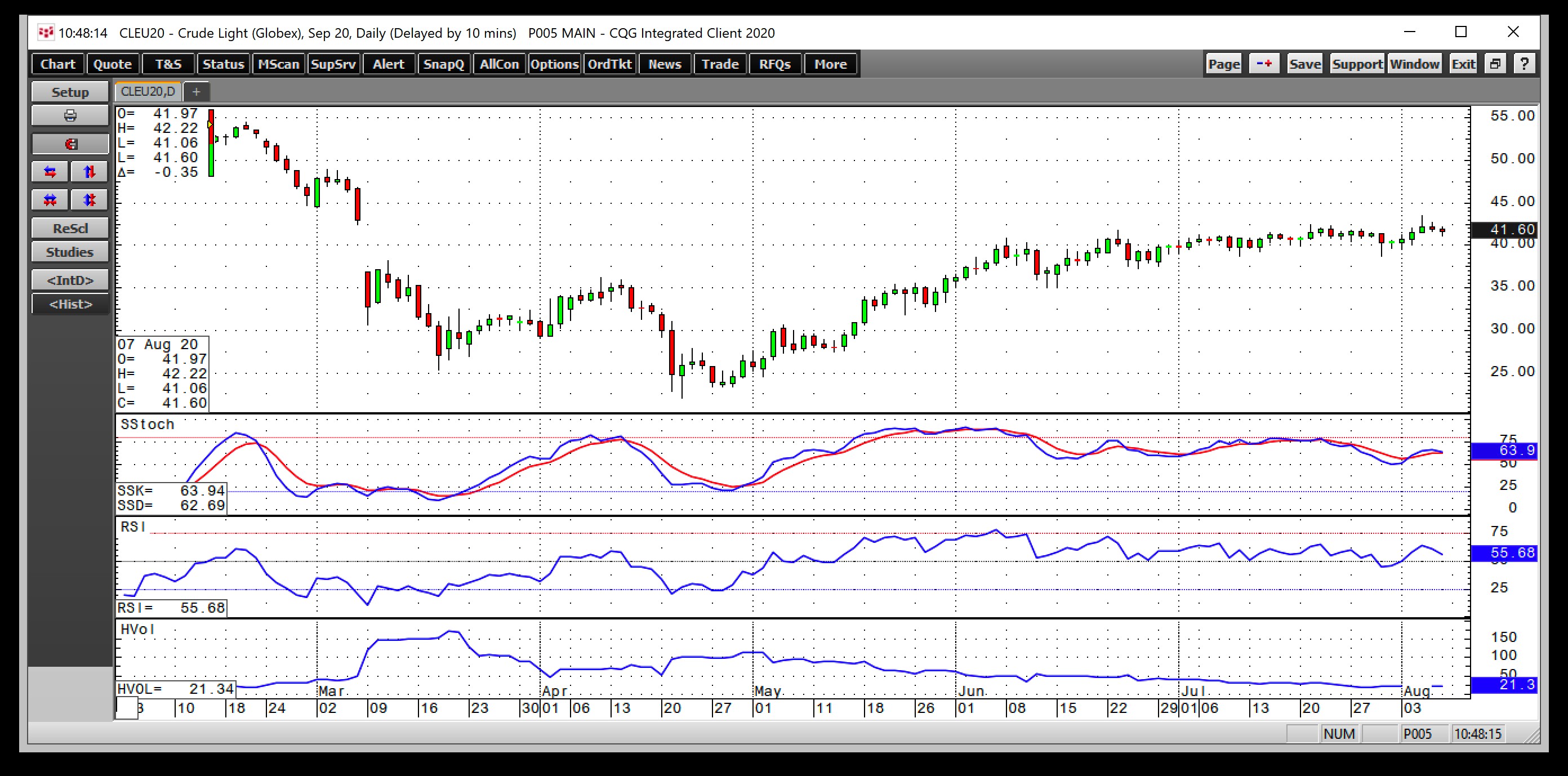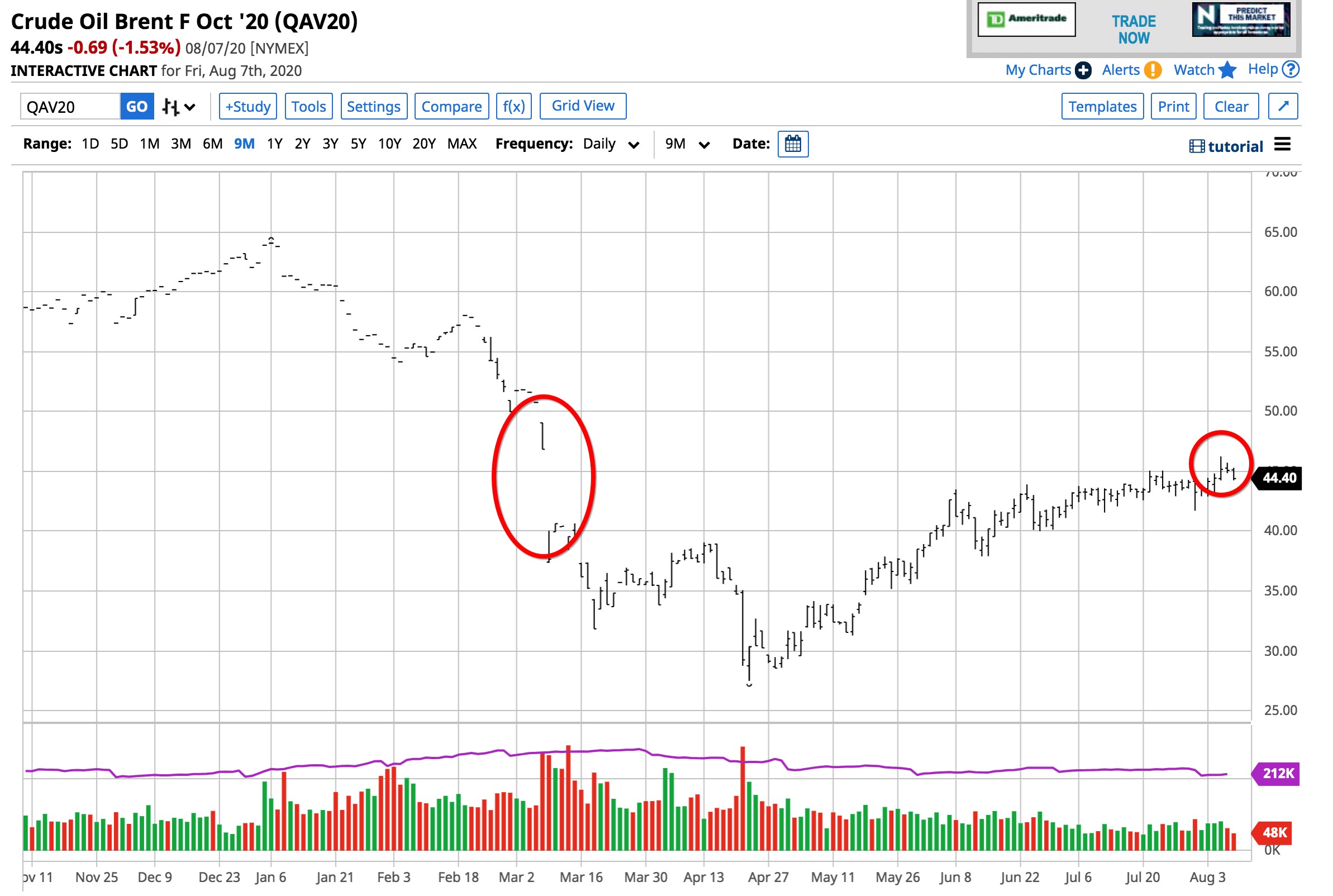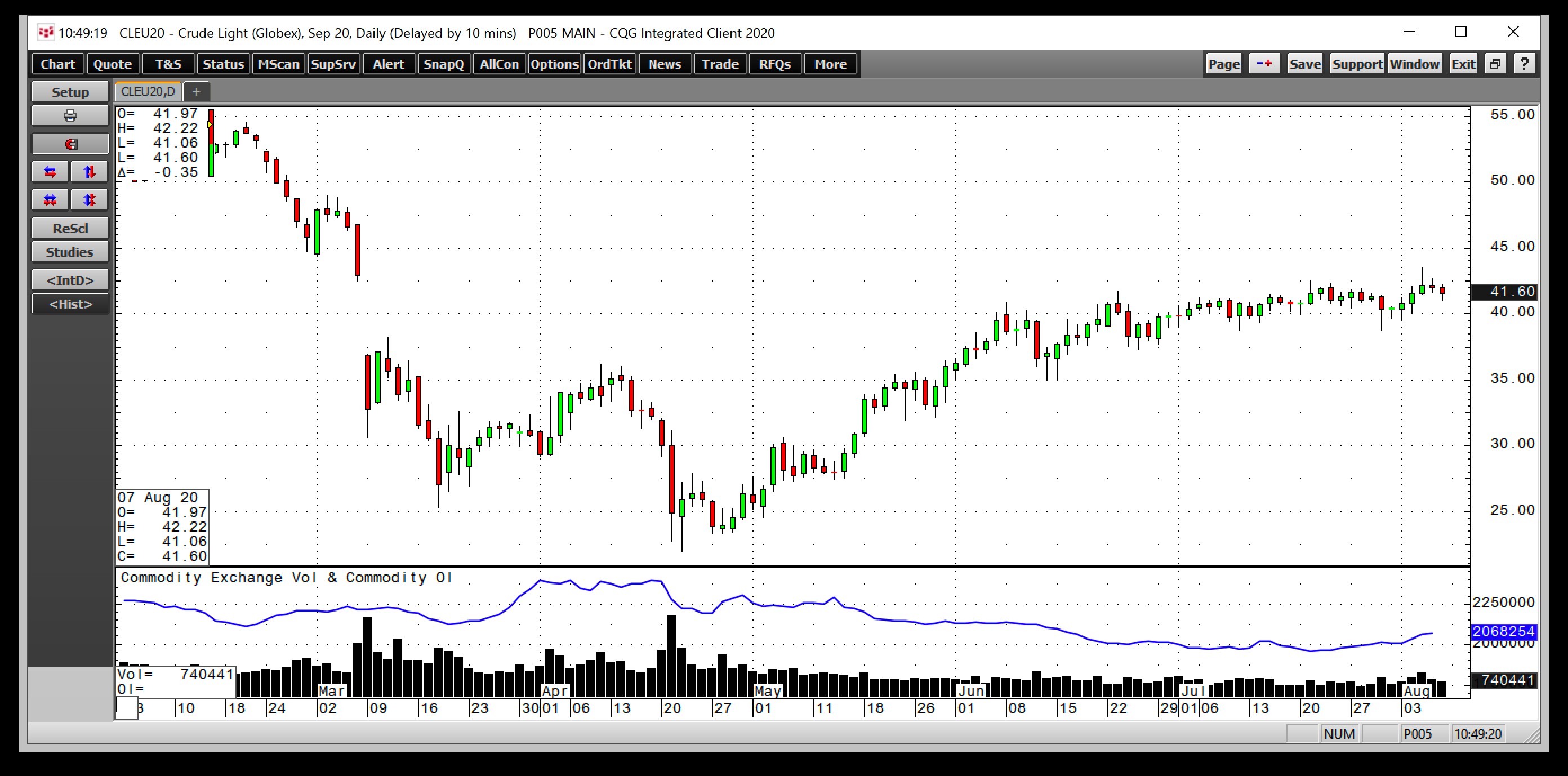The crude oil experienced wild volatility over the first three months of 2020. In early January, a face-off between the U.S. and Iran in Iraq pushed the price of the energy commodity to the high of this year at $65.65 per barrel on the nearby NYMEX futures contract. The outbreak and spread of coronavirus that caused oil demand to evaporate sent the price to a record low of negative $40.32 per barrel on April 20. The nearby WTI futures traded in a $105.97 range over the first four months of this year.
As production declined and some degree of demand returned to the market, the oil price recovered to the $40 per barrel level. At the same time, the energy commodity had gone into a coma. Trading crude oil was exciting as the price dropped from the January high to the late April low and then recovered through early June. Price volatility creates a paradise of opportunities for nimble traders with their fingers on the market’s pulse.
Over the past weeks, opportunities have evaporated as the price action in the crude oil futures arena disappeared. Watching the price of oil was a lot like watching paint dry, but that could be changing. The United States Oil Fund (NYSE:USO) moves higher and lower with the price of the energy commodity on NYMEX. The United States Brent Oil Fund (NYSE:BNO) tracks the Brent crude oil futures.
Break Higher On Bullish Inventory Data
Last week, the American Petroleum Institute told the oil market that U.S. stockpiles dropped by 8.587 million barrels for the week ending on July 31. Gasoline stocks fell 1.748 million barrels, while distillate inventories rose by 3.824 million barrels. The Energy Information Administration reported a decline of 7.4 million barrels of crude oil for the same period and a rise of 419,000 barrels and 1.60 million barrels of gasoline and distillates. At the same time, the EIA said that daily output in the U.S. The stockpiles data was bullish for crude oil, and the price of nearby NYMEX futures moved to a new short-term high.

Source: CQG
The daily chart of September NYMEX futures shows that the price rose to a high of $43.52 per barrel on Aug. 5, the highest level since March 6. Price momentum and relative strength indicators were above neutral territory. Daily historical volatility at 21.3% continued to decline after reaching over 170% in late March.

The chart of the active month October Brent crude oil futures contract reached a high of $46.24 last week as it continues to work to fill the March gap on the chart at $46.84 per barrel.
Lower Production Has Balanced Fundamental Equation
One sign of underlying strength came in July when OPEC, Russia, and other world producers tapered their production cut from almost 10 million barrels per day to 7.7 million barrels starting in August. The price hardly reacted to the increase in production from March.
At the same time, the decline in U.S. output from 13.1 million barrels per day in March to 11.0 million barrels as of July 31, has been another supportive factor of the price of the energy commodity.
Even though the number of coronavirus cases continues to rise in the U.S. and worldwide, the reopening of many businesses has increased the demand for energy. China has been purchasing crude oil as its economy has improved. The reduction in output balanced the supply and demand equation for crude oil. After consolidating around the $40 per barrel level on nearby NYMEX futures in June and July, the price moved to a higher high in early August, which could be a sign that the path of least resistance for the price of the energy commodity remains higher.
Watch Open Interest In NYMEX Futures Market For Clues About Price Direction
A falling dollar and unprecedented levels of central banks and government stimulus are bullish for all commodities, and crude oil is no exception. I will be watching the metric that reflects the total number of open long and short positions in the NYMEX crude oil futures market for clues about the path of prices over the coming days and weeks.

Source: CQG
The daily chart of September NYMEX futures shows that open interest peaked at over 2.39 million contracts in early April while the price as experiencing significant volatility. The metric hit a low of 1.957 million contracts on July 21. At the end of last week, the open interest was at 2.068 million contracts. Rising open interest and higher prices tend to be a technical validation of a bullish trend in a futures market.
Open interest reflects the herd mentality in a futures market. As speculators return to the market, the metric rises. If crude oil is heading higher, I expect the total number of speculative positions to grow with the price of the energy commodity. The next level of technical resistance on September futures stands at the early March high at $48.97 per barrel. The level on the upside is closer in Brent as it is at $46.84, the price that will fill the void on the chart.
Since late April, the trend of higher lows and higher highs in crude oil remained firmly in place at the end of last week as the price settled at $41.22 on the September futures contract.
